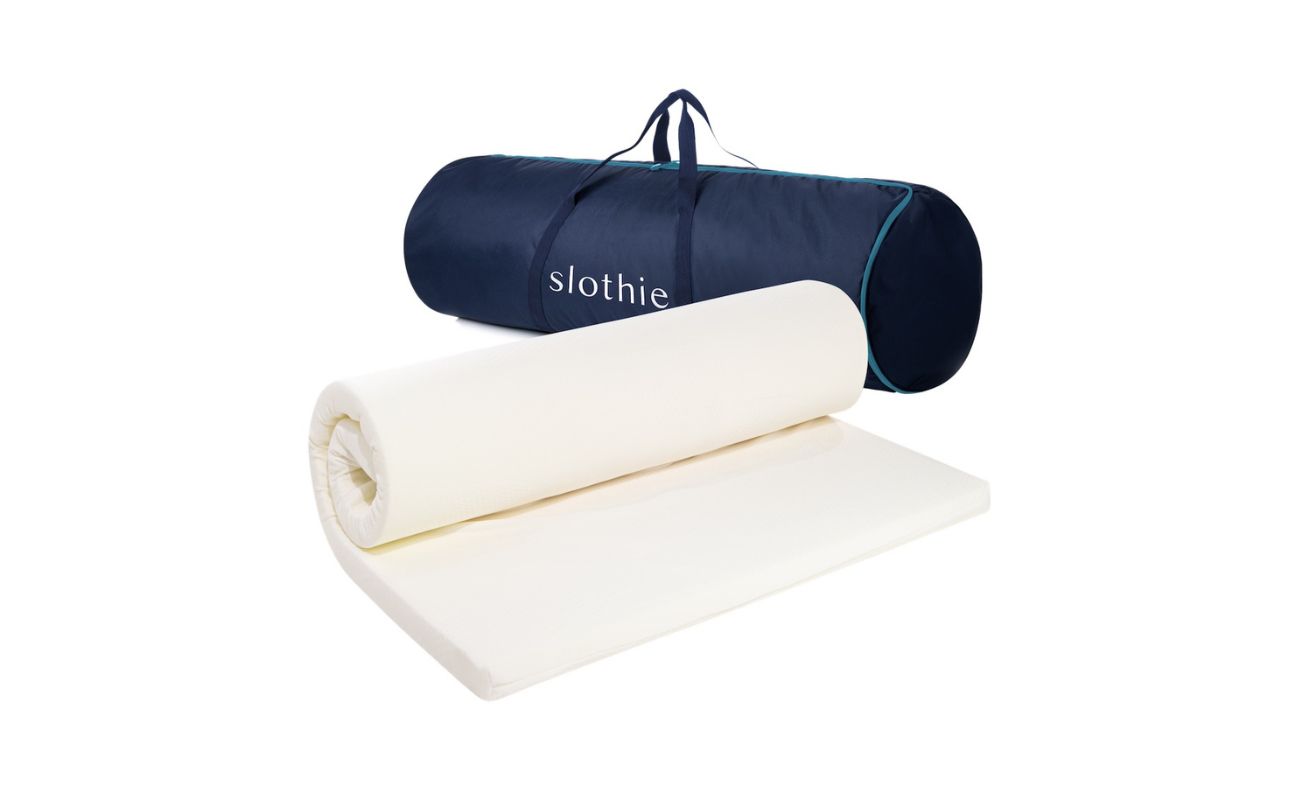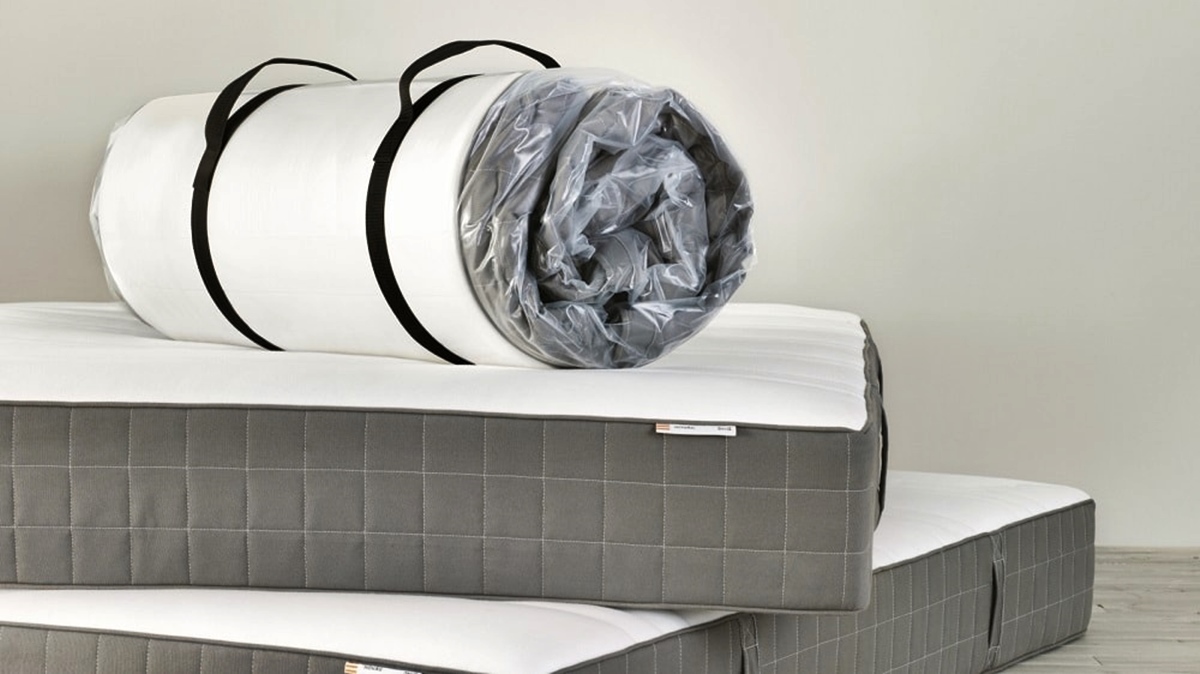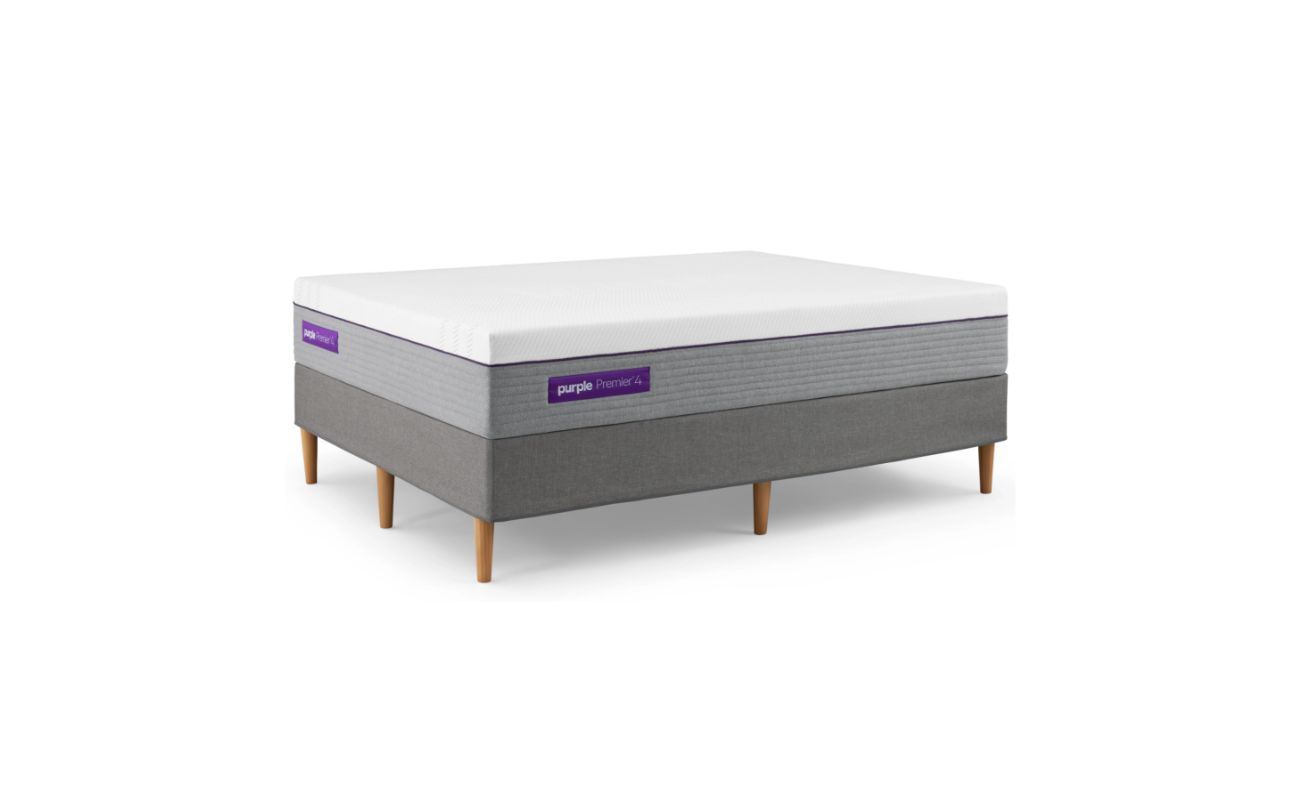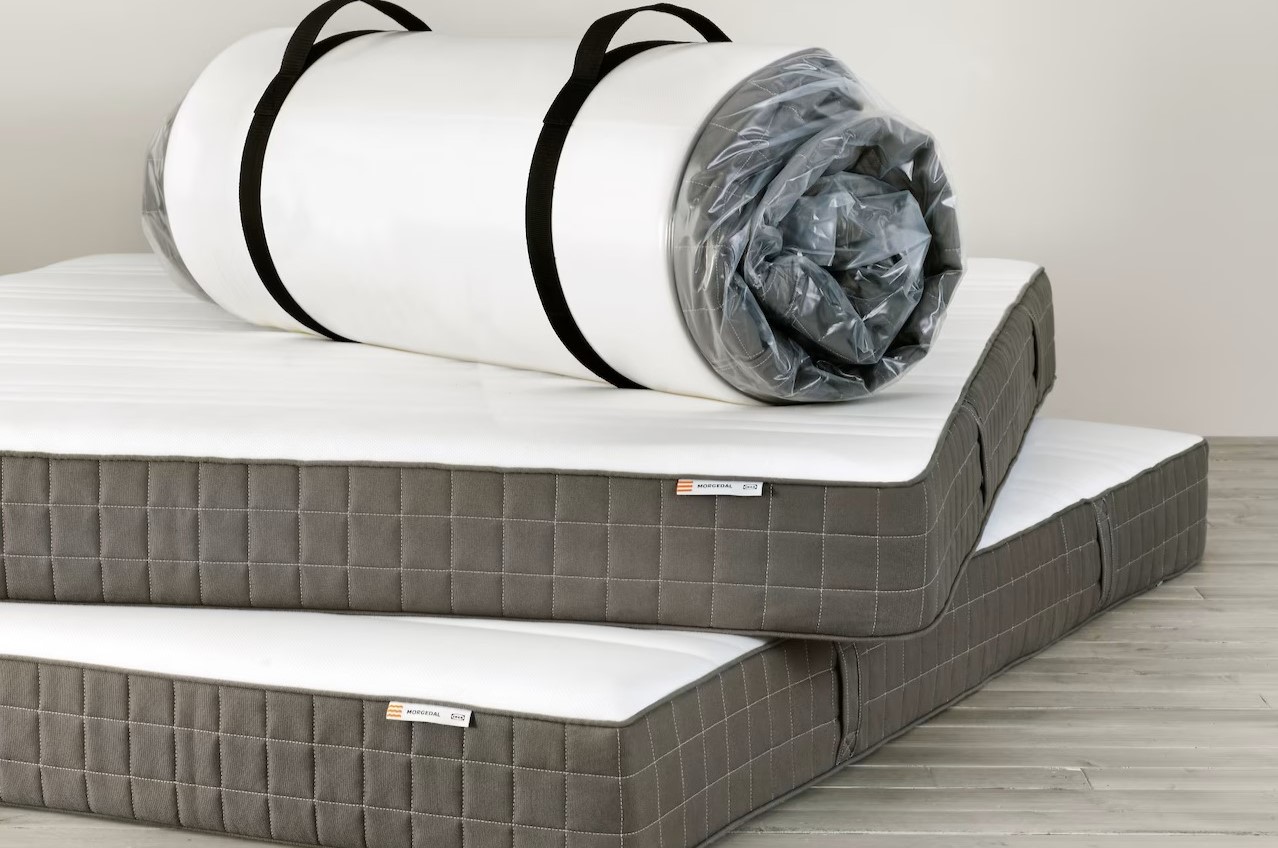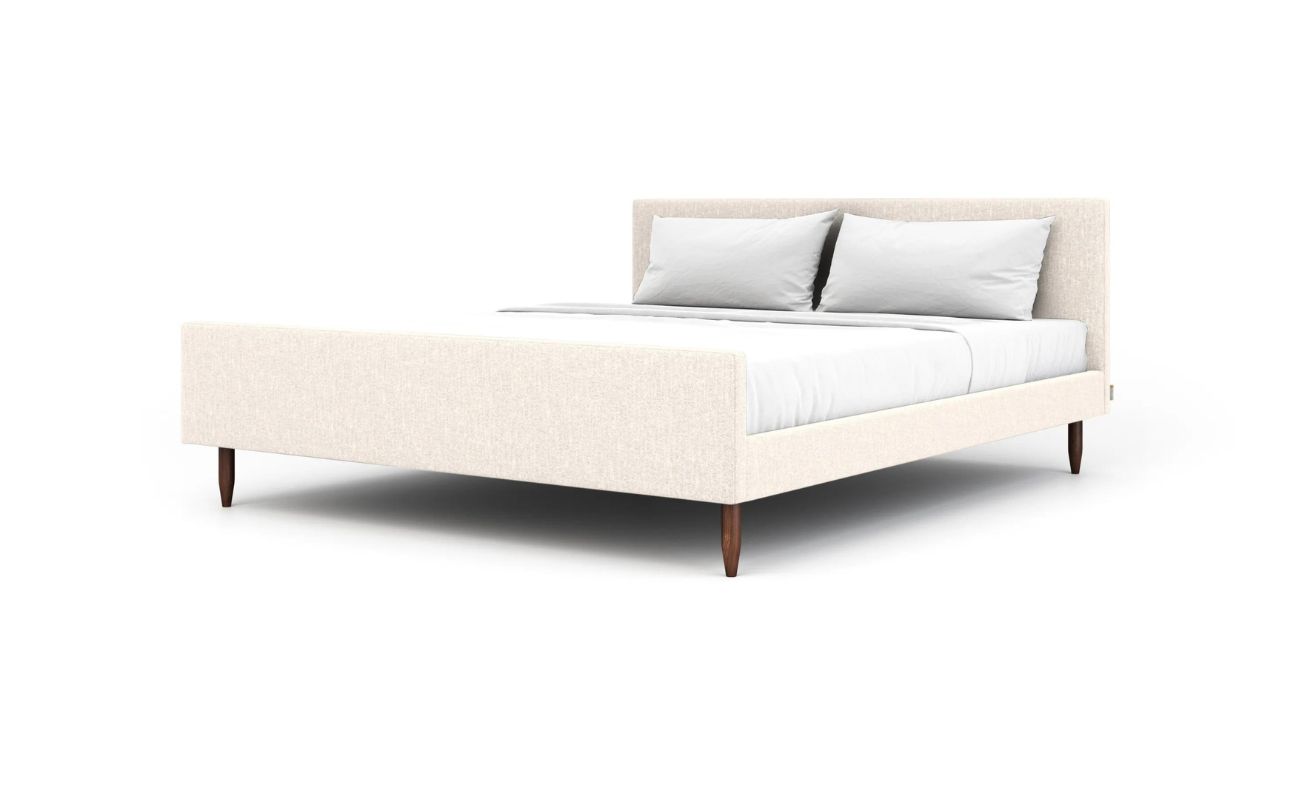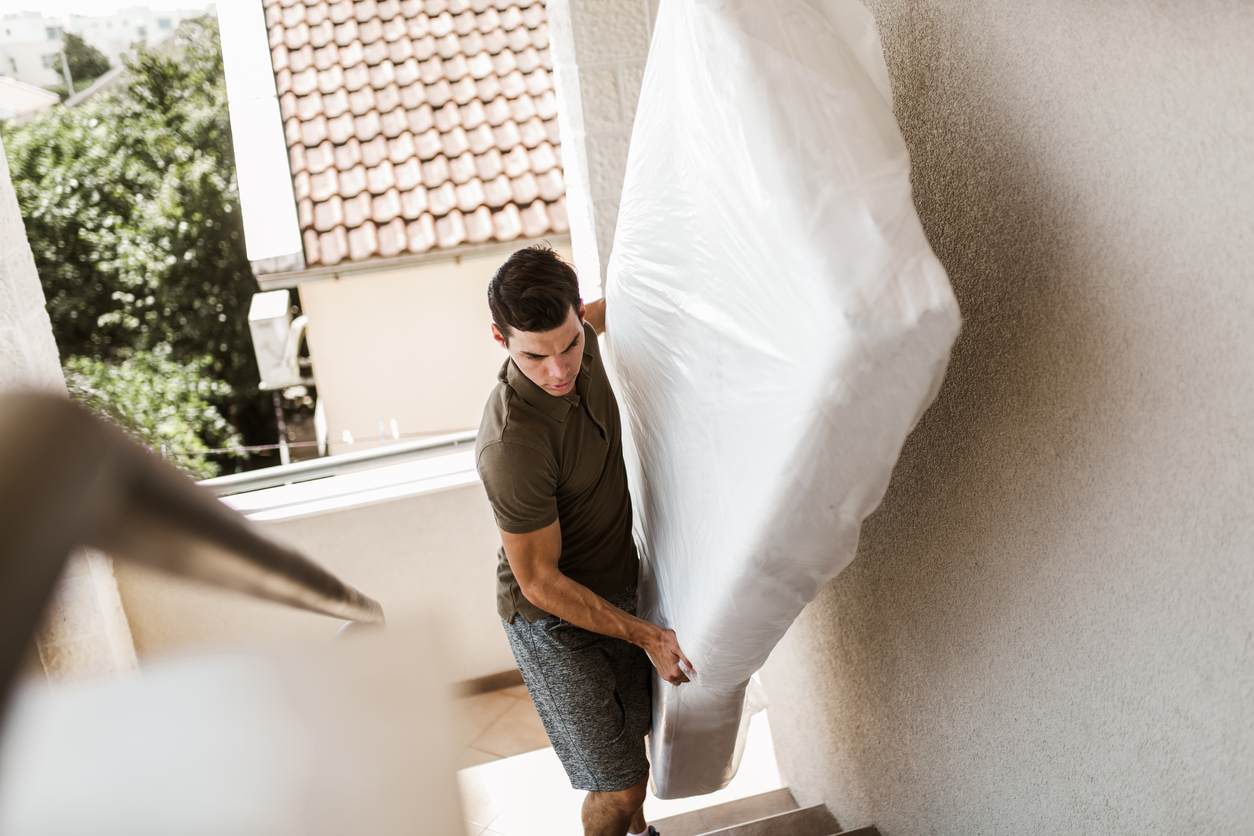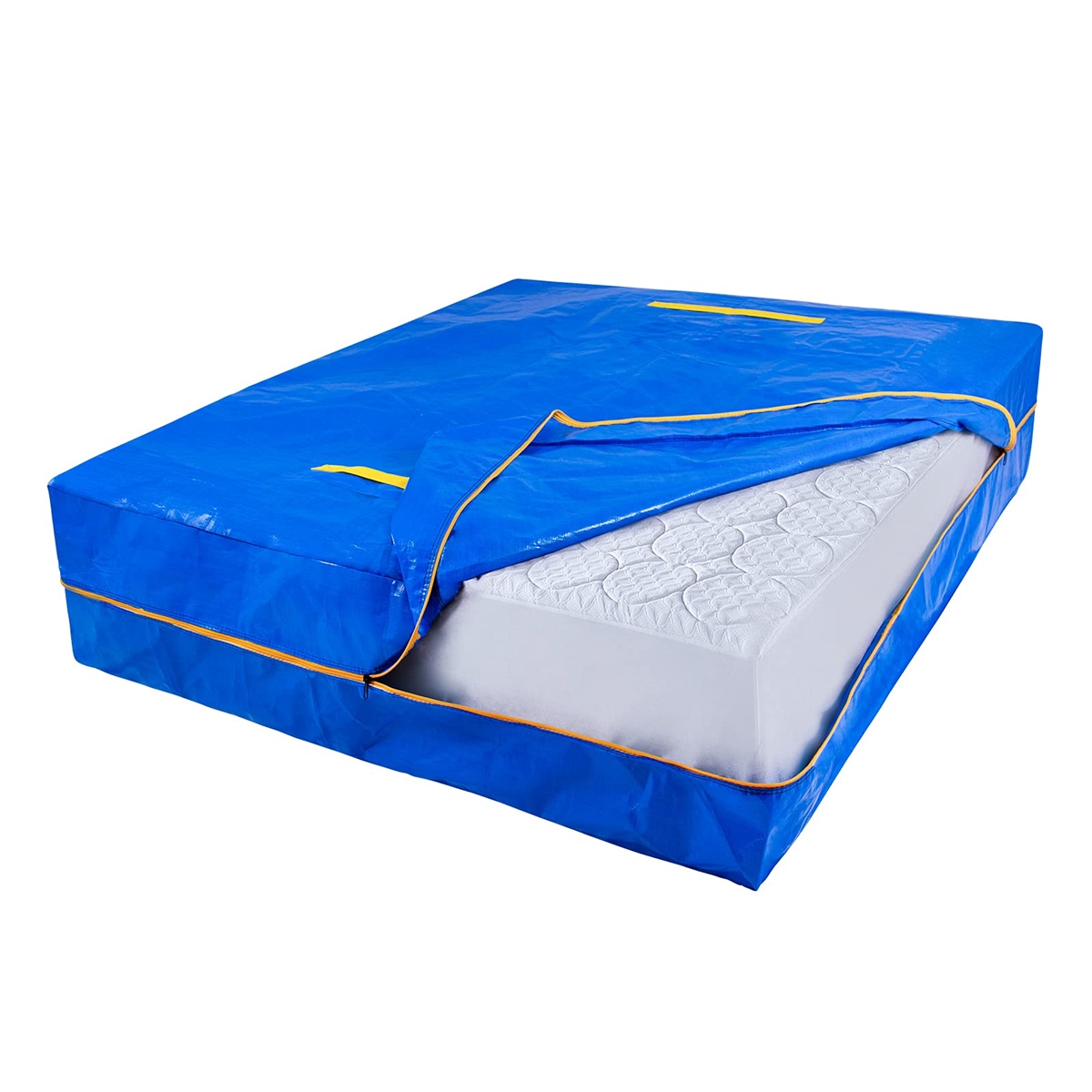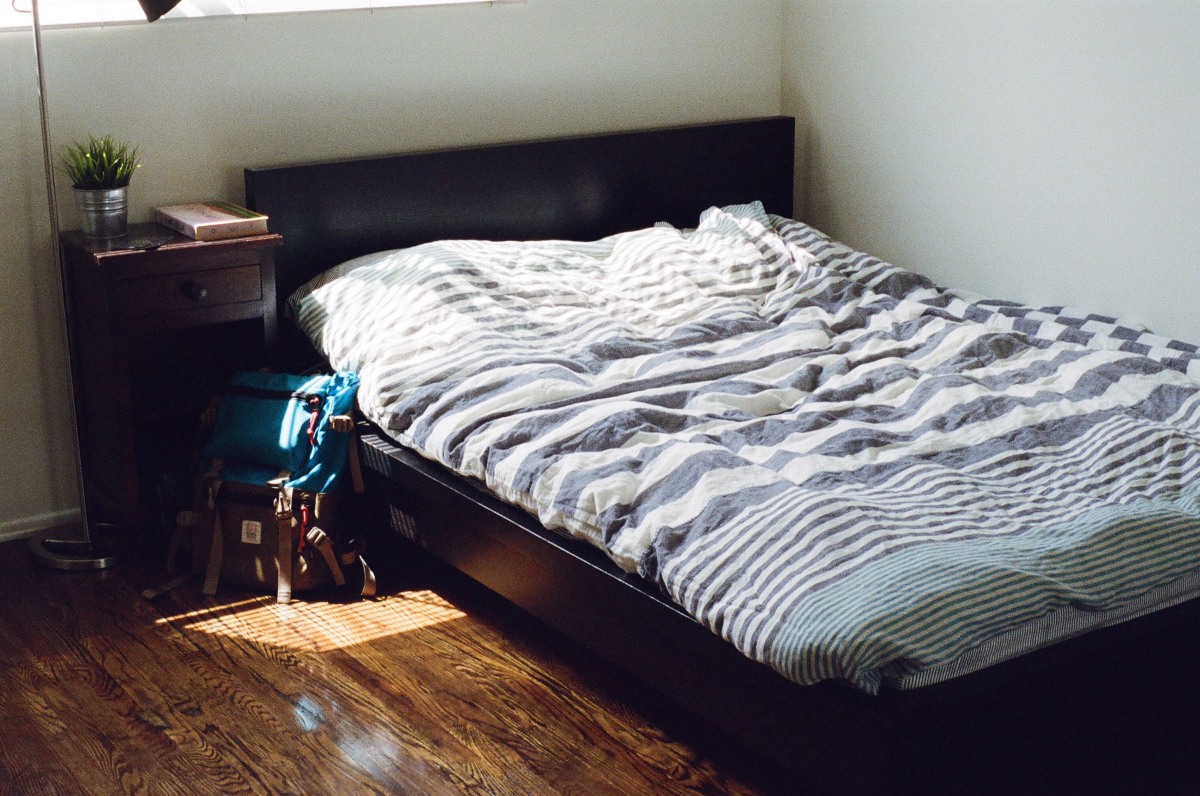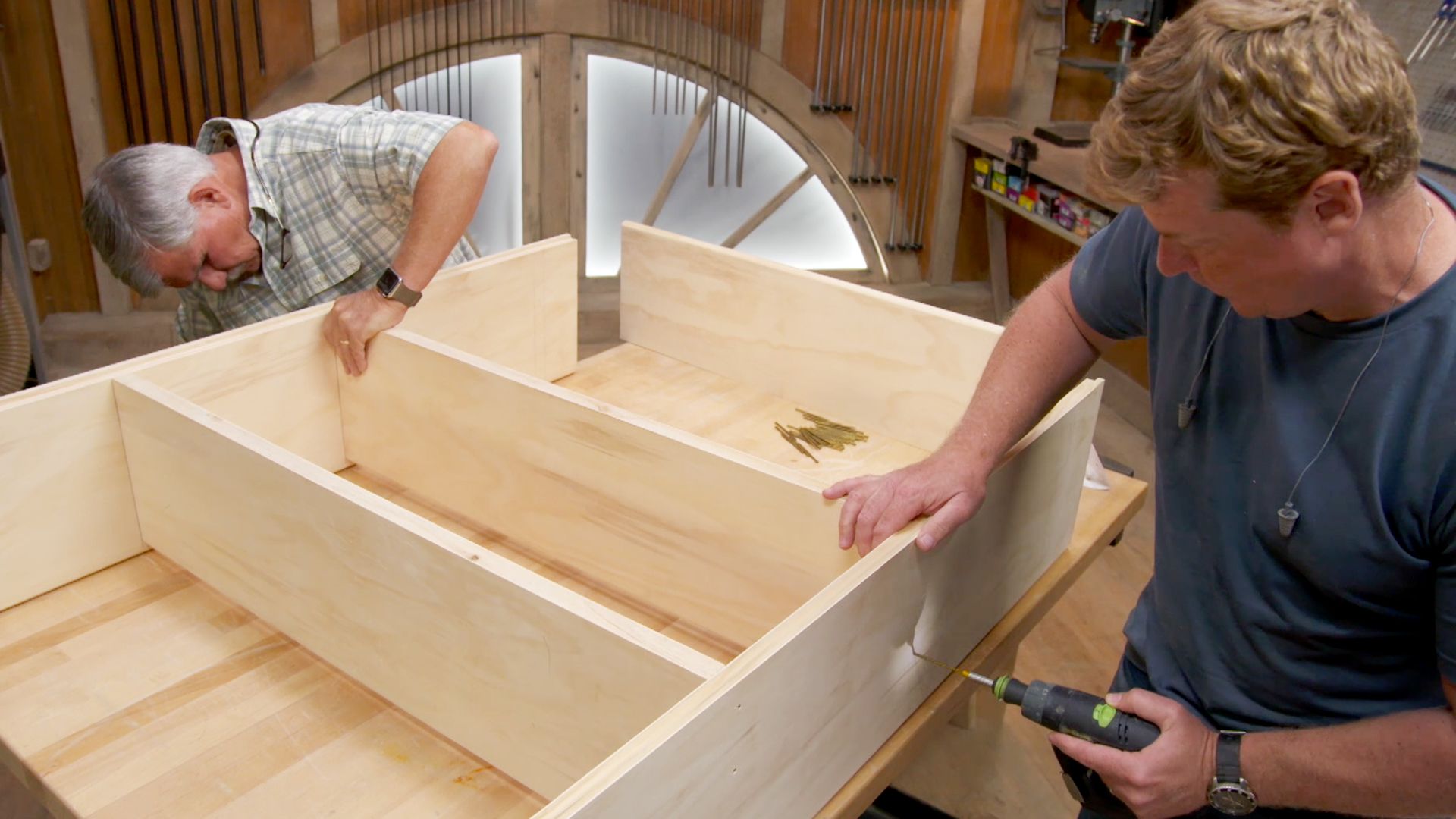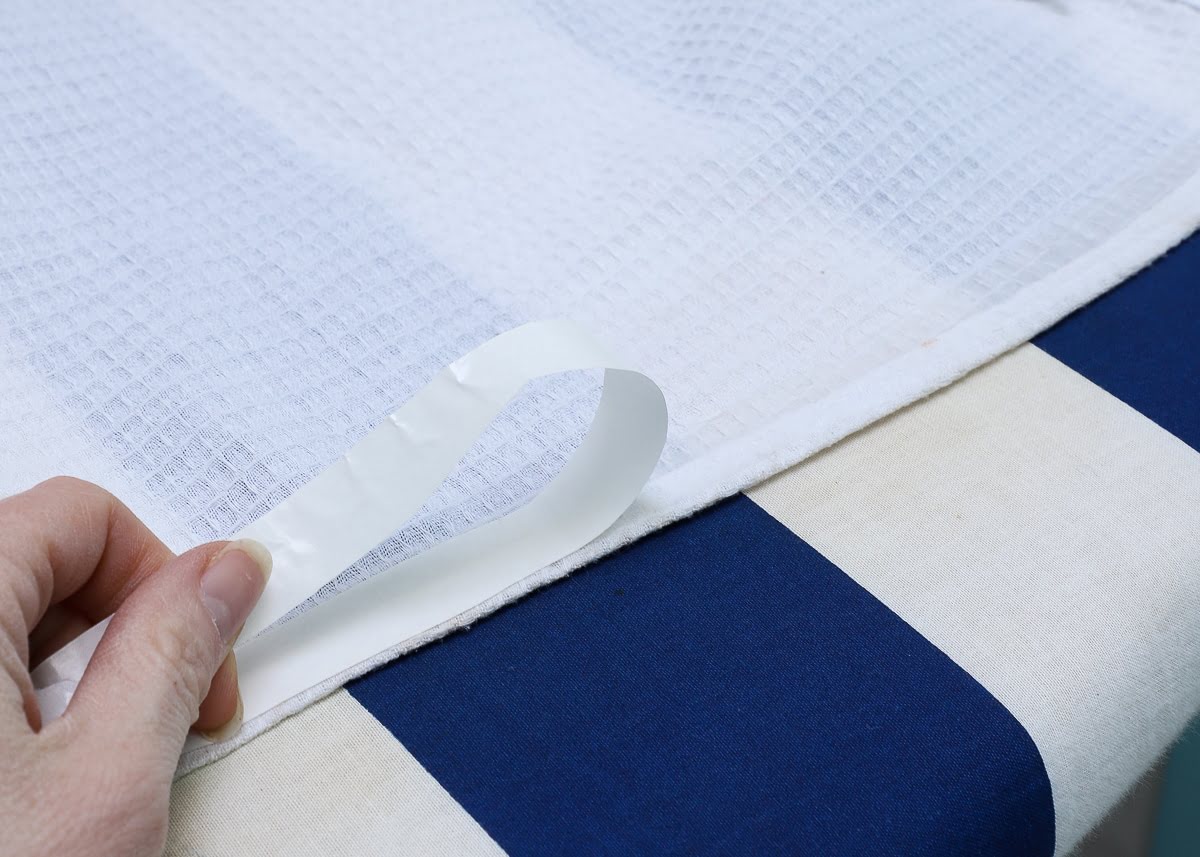Home>Furniture>Bedroom Furniture>How To Easily Move A Mattress
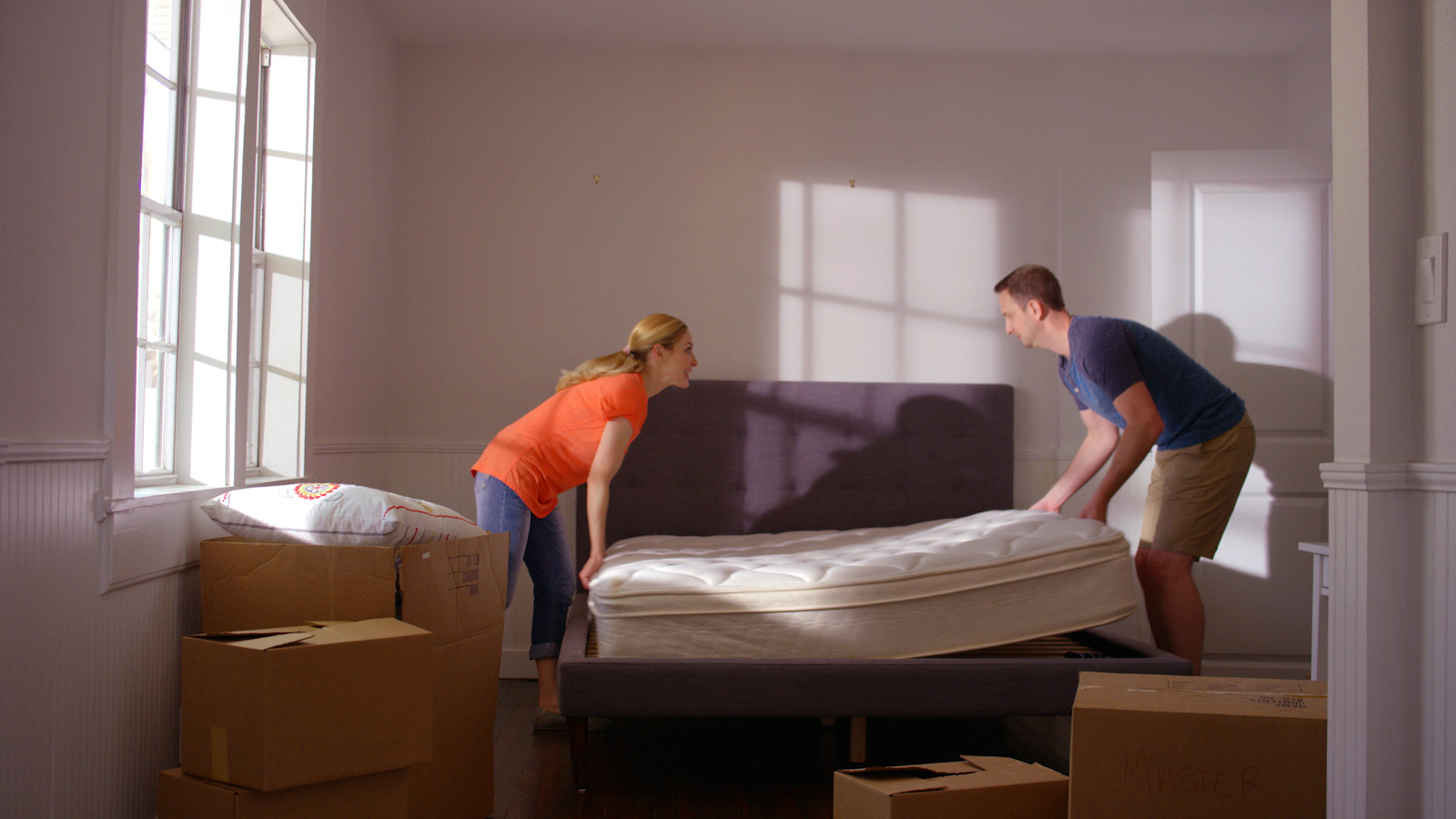

Bedroom Furniture
How To Easily Move A Mattress
Modified: March 20, 2024
Learn the simple steps for moving your mattress with ease. Properly handle your bedroom furniture and make your move stress-free.
(Many of the links in this article redirect to a specific reviewed product. Your purchase of these products through affiliate links helps to generate commission for Storables.com, at no extra cost. Learn more)
Introduction
Moving a mattress can be a daunting task. Whether you are relocating to a new home or simply rearranging your bedroom furniture, the thought of maneuvering a heavy and bulky mattress may seem overwhelming. However, with the right approach and some helpful tips, moving a mattress can be a smooth and stress-free experience.
In this article, we will guide you through the process of easily moving a mattress, ensuring that it reaches its destination safely and securely. From gathering the necessary supplies to navigating tricky spaces, we will provide you with a step-by-step plan to make the task a breeze.
By following our expert advice, you can save yourself from the headache of wrestling with a cumbersome mattress and minimize the risk of damage during the moving process. So, let’s dive in and discover the secrets to effortless mattress-moving!
Key Takeaways:
- Moving a mattress can be made easy with the right supplies, preparation, and teamwork. Protect your mattress, clear the path, and enlist help for a stress-free move.
- Prioritize safety, secure the mattress properly, and drive cautiously to ensure a smooth and successful mattress-moving experience. Consider professional assistance if needed.
Read more: How To Move A Washing Machine Easily
Step 1: Gather the necessary supplies
Before you begin the process of moving a mattress, it’s essential to gather all the necessary supplies. Having the right tools at hand will make the task much easier and more efficient. Here is a list of items you’ll need:
- Heavy-duty mattress bags: These bags will protect your mattress from dirt, dust, and moisture during transportation. Make sure to choose bags that are large enough to accommodate your mattress size.
- Packing tape: Use strong packing tape to secure the mattress bags tightly. This will prevent them from slipping off during the moving process.
- Furniture straps: These straps will help you lift and maneuver the mattress safely. Look for straps with adjustable lengths and sturdy buckles.
- Furniture dolly or hand truck: A dolly or hand truck can be a lifesaver when it comes to moving heavy objects like mattresses. It allows you to roll the mattress instead of carrying it, reducing strain on your back.
- Protective blankets or moving pads: These blankets or pads will provide extra cushioning and protection for your mattress. Wrap them around the mattress before placing it in the bag for added security.
- Box cutter or scissors: You’ll need these tools to open the mattress bags and cut the packing tape when you reach your destination.
- Work gloves: Wearing work gloves will give you a better grip on the mattress and protect your hands from any sharp edges or splinters.
Having these supplies ready before you start moving the mattress will streamline the process and ensure that you are well-prepared for any challenges that may arise along the way.
Step 2: Clear the path and prepare the mattress
Before you start moving the mattress, it’s important to clear the path and prepare the mattress for transportation. Follow these steps to ensure a smooth and hassle-free process:
- Remove any obstacles: Take a look at the route you’ll be taking to move the mattress. Clear away any furniture, decor, or other objects that may obstruct your path. This will create a clear and safe passage for you and your helpers.
- Clean the mattress: Give your mattress a thorough cleaning before moving it. Vacuum any dust or debris, and spot clean any stains. Keeping the mattress clean will not only protect it during transportation but also ensure a fresh start in your new location.
- Disassemble the bed frame, if necessary: If your mattress is currently sitting on a bed frame, check whether it needs to be disassembled before moving. Follow the manufacturer’s instructions for dismantling the frame and keep the necessary tools handy.
- Protect the corners: Use corner protectors or bubble wrap to safeguard the corners of the mattress from accidental bumps and scrapes. This will help prevent any damage to the mattress during the moving process.
Taking these steps will help ensure that your path is clear and that your mattress is in good condition for transportation. Now that you’ve prepared the mattress, it’s time to move on to the next step: enlisting some help.
Step 3: Enlist some help
Moving a mattress is not a job that can be done single-handedly. Enlisting some help is crucial to ensure the safety of both the movers and the mattress. Here’s how you can gather the assistance you need:
- Recruit friends or family members: Reach out to friends, family, or neighbors and ask for their assistance in moving the mattress. Having a few extra pairs of hands will make the task much more manageable and reduce the risk of accidents.
- Hire professional movers: If you prefer not to burden your friends or family with the task, consider hiring professional movers. These experienced professionals are skilled in handling heavy and delicate items, providing you with peace of mind during the move.
- Communicate with your helpers: Before you begin moving the mattress, communicate with your helpers about the plan and assign roles. Clearly explain how you want the mattress to be lifted and maneuvered to avoid any confusion or accidents.
- Ensure everyone’s safety: Safety should always be a top priority during the moving process. Make sure everyone involved in moving the mattress wears appropriate clothing and footwear to prevent slips or falls. Additionally, remind your helpers to lift with their legs, not their backs, to avoid any potential injuries.
Enlisting the help of others will not only make the task easier but also add an element of teamwork and camaraderie to the moving experience. With your helpers on board, you’re now ready to lift and move the mattress to its next location.
Step 4: Lift the mattress
Lifting the mattress properly is crucial to prevent strain or injury. Follow these steps to lift the mattress safely:
- Position yourself correctly: Stand facing the mattress with your feet shoulder-width apart. Bend your knees and keep your back straight. This position will provide stability and minimize the strain on your back.
- Secure your grip: Place your hands on opposite corners of the mattress, gripping it firmly. You can also use furniture straps to get a more secure hold.
- Lift with your legs: Engage your leg muscles and push through your heels as you lift the mattress. Avoid using your back to lift as this can lead to injury. Keep your core tight and maintain a steady and controlled lifting motion.
- Coordinate with your helpers: Communicate with your helpers to ensure a synchronized lifting motion. Lift the mattress together, counting to three, to ensure everyone lifts at the same time.
- Keep the mattress level: As you lift the mattress, make sure to keep it level and parallel to the ground. Tilted or uneven lifting can cause unnecessary strain or destabilize your grip.
Remember, it’s important to prioritize your safety and avoid attempting to lift the mattress if it is too heavy for you or your helpers. In such cases, consider using a dolly or hand truck to move the mattress instead. With the mattress safely lifted, it’s time to navigate through doorways and hallways, which leads us to the next step.
When moving a mattress, use mattress bags or plastic wrap to protect it from dirt and damage. This will make it easier to transport and keep it clean.
Read more: How To Move A Mattress By Yourself
Step 5: Maneuver through doorways and hallways
Moving a mattress through narrow doorways and tight hallways can be a challenging task. However, with proper maneuvering techniques, you can navigate these obstacles smoothly. Here’s what you need to do:
- Measure the dimensions: Before attempting to move the mattress, measure both the width of the mattress and the width of the doorways and hallways you will be passing through. This will help you determine if the mattress can fit through without any issues.
- Angle the mattress: If the doorway is narrower than the width of the mattress, angle the mattress diagonally. This can create more space and make it easier to maneuver through the doorway.
- Rotate the mattress: In tight hallways, it may be necessary to rotate the mattress to a vertical or upright position. This can reduce its width and make it easier to pass through narrow spaces.
- Use furniture straps: In narrow passages, using furniture straps can provide better control and stability. Attach the straps securely to the mattress and guide it through the doorway or hallway with the help of your helpers.
- Protect the walls and furniture: To protect the walls and any other furniture along the way, place moving pads or blankets over these surfaces. This will prevent any accidental scratches or damage during the moving process.
By using these techniques, you can effectively maneuver your mattress through doorways and hallways, ensuring that it reaches its destination without any mishaps. However, if the mattress simply won’t fit, you may need to explore alternative routes or consider disassembling the mattress or furniture temporarily.
Step 6: Navigate stairs or tight spaces
When moving a mattress, navigating stairs or tight spaces can present unique challenges. However, with careful planning and proper execution, you can safely maneuver your mattress through these obstacles. Follow these steps to navigate stairs or tight spaces:
- Assess the situation: Before attempting to move the mattress up or down the stairs, assess the space and any potential hazards. Take note of any sharp corners, low ceilings, or uneven steps that could pose a risk.
- Secure the mattress: To ensure stability during the process, have your helpers firmly grip the mattress in a balanced position. Use furniture straps, if available, to create a secure hold.
- Use a mattress slide: In cases where the staircase is too narrow or winding, consider using a mattress slide. This device allows you to smoothly glide the mattress down the stairs, minimizing the risk of damage or injury.
- Maintain clear communication: As you navigate the stairs, clear communication between you and your helpers is crucial. Establish a system of signals or verbal cues to coordinate the movement of the mattress and ensure everyone is in sync.
- Take it step by step: When moving the mattress up or down the stairs, take it one step at a time. Avoid rushing and concentrate on maintaining a steady, controlled movement. Pause and regroup if needed, ensuring everyone is ready before proceeding to the next step.
- Protect the walls and banisters: To avoid scraping or damaging the walls and banisters, use moving pads or blankets to cover these surfaces. This extra layer of protection will safeguard your surroundings during the moving process.
Navigating stairs or tight spaces may require additional effort and caution, but with the right approach, you can successfully transport your mattress to its destination. Once you’ve successfully maneuvered through these obstacles, the next step is to load the mattress onto a vehicle.
Step 7: Load the mattress onto a vehicle
When it comes to loading a mattress onto a vehicle, proper technique and preparation are key. Follow these steps to ensure a smooth and secure loading process:
- Choose the right vehicle: Determine the appropriate vehicle for transporting the mattress. If you have a small car, you may need to fold down the back seats or opt for a larger vehicle like a van or pickup truck.
- Create a clear path: Ensure there is a clear and unobstructed path from the mattress’s current location to the vehicle. Clear away any obstacles or debris that could impede the loading process.
- Position the vehicle: Park the vehicle as close as possible to the entry point from where the mattress will be loaded. This minimizes the distance you have to carry the mattress and makes the loading process more efficient.
- Use a ramp or loading aid: If the vehicle is higher than the ground, use a ramp or loading aid to bridge the gap. This ensures a smoother transition and reduces the risk of dropping or damaging the mattress.
- Slide or lift the mattress: Depending on the size and weight of the mattress, you may choose to slide it directly into the vehicle or lift it with the help of your helpers. Use your judgment to determine the best approach based on the specific circumstances.
- Keep the mattress stable: Once the mattress is inside the vehicle, ensure it is secure and stable. Use tie-down straps or bungee cords to hold it in place and prevent shifting during transportation.
- Protect the mattress: Cover the mattress with a protective blanket or tarp to shield it from dust, dirt, and any potential damage during the journey. This extra layer of protection will help keep your mattress in pristine condition.
By following these steps, you can load your mattress onto a vehicle safely and securely. With the mattress loaded, the final step in the process is to secure it for transportation.
Step 8: Secure the mattress for transportation
Securing the mattress properly for transportation is crucial to prevent any shifting or damage during the journey. Follow these steps to ensure your mattress remains safe and secure while in transit:
- Double-check the fastenings: Before you hit the road, double-check that all fastenings are secure. Ensure that tie-down straps or bungee cords are tightly secured and that the mattress is not loose or prone to movement.
- Test the stability: Give the mattress a gentle shake to test its stability. If it wobbles or moves excessively, readjust the fastenings and straps until the mattress is securely held in place.
- Protect the mattress: As an extra layer of protection, cover the mattress with a waterproof and durable cover. This will safeguard it from any potential spills, dirt, or weather conditions during transportation.
- Drive cautiously: While on the road, drive cautiously to minimize any sudden movements or sharp turns. This will help maintain the stability of the mattress and prevent any unnecessary strain or impact.
- Monitor the load: Periodically check on the mattress during the journey to ensure it remains secure. If you notice any signs of shifting or instability, make adjustments as needed to maintain the mattress’s position.
- Unload with care: Once you’ve reached your destination, take care when unloading the mattress from the vehicle. Use the same lifting and maneuvering techniques as earlier, and be mindful of your surroundings to avoid any accidents or damage.
By following these steps, you can ensure that your mattress is securely fastened and protected for transportation. Whether you’re moving to a new home or rearranging your bedroom, your mattress will arrive at its destination in excellent condition and ready to provide you with a cozy night’s sleep.
Remember, safety is paramount throughout the entire process. Always prioritize the well-being of yourself and your helpers, and if the mattress proves too heavy or difficult to handle, it may be worth considering professional assistance to ensure a smooth and stress-free experience.
Read more: How To Move A Latex Mattress
Conclusion
Moving a mattress doesn’t have to be a daunting task. With the right approach and a little preparation, you can easily and safely transport your mattress to its new location. By following the step-by-step guide we’ve provided, you can navigate through the process with ease and minimize the risk of damage or injury.
From gathering the necessary supplies to securing the mattress for transportation, each step plays a vital role in ensuring a smooth and successful move. Remember to enlist some help, communicate effectively with your helpers, and prioritize safety at every stage of the process.
Throughout the journey, protect your mattress using heavy-duty mattress bags, packing tape, and furniture straps. Clear the path, prepare the mattress, and carefully navigate doorways, hallways, stairs, and tight spaces. Load the mattress onto a suitable vehicle, secure it tightly, and drive cautiously to minimize any potential movement.
By taking these steps, you can move your mattress without the stresses and strains that often accompany the process. With patience, teamwork, and attention to detail, you’ll have your mattress settled into its new home in no time.
As a final note, should you encounter any difficulty or hesitation during the process, don’t hesitate to seek professional assistance. Sometimes, it’s best to rely on experts who have the experience and knowledge to handle the task effortlessly.
Happy moving, and enjoy the comfort of your newly arranged bedroom!
Frequently Asked Questions about How To Easily Move A Mattress
Was this page helpful?
At Storables.com, we guarantee accurate and reliable information. Our content, validated by Expert Board Contributors, is crafted following stringent Editorial Policies. We're committed to providing you with well-researched, expert-backed insights for all your informational needs.
